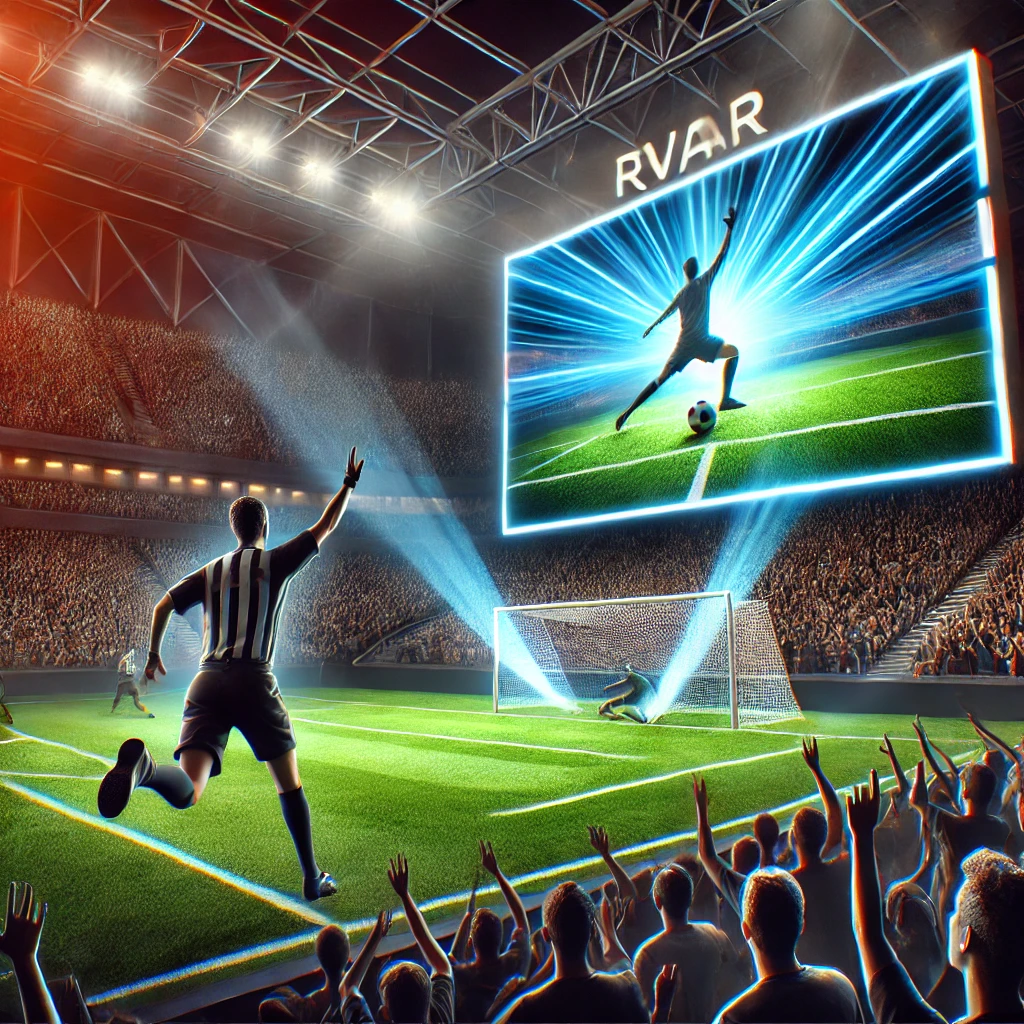Instant Replay in Sports
Instant Replay in Sports: A Comprehensive Guide

Introduction
“Instant Replay in Sports” has transformed the way we experience and perceive competitive events. This technology ensures accurate decisions, minimizing human error and enhancing the integrity of sports. While the concept seems straightforward, its implementation involves complex technology and protocols. In this blog post, we’ll explore what instant replay in sports is, its history, the sports that use it, its pros and cons, and its future. Understanding these aspects will provide a comprehensive view of how instant replay has revolutionized sports.
What is Instant Replay in Sports?
Instant replay in sports refers to the use of video technology to review and analyze moments during a game. This technology allows officials to make more accurate decisions by revisiting specific instances, such as goals, fouls, or out-of-bounds plays. Typically, cameras are strategically placed around the playing area, capturing multiple angles of the action. When a contentious or unclear event occurs, officials can stop the game, review the footage, and make a more informed call.
The process involves several steps. First, the event in question is identified either by the officials or through a coach’s challenge, depending on the sport. Next, the relevant footage is reviewed on monitors, often in slow motion, to assess the situation from different perspectives. After the review, a decision is communicated to the players, coaches, and fans, often through a public address system or visual aids.
Instant replay technology includes high-definition cameras, advanced software for slow-motion playback, and sometimes, computer algorithms to detect specific events automatically. The primary goal is to ensure fairness and accuracy in officiating, thereby preserving the integrity of the sport.
The History of Instant Replay in Sports
The journey of instant replay in sports began in the 1960s. Its inception is credited to Tony Verna, a television director, who first used the technology during a live broadcast of the Army-Navy football game in 1963. This early version of instant replay was rudimentary compared to today’s standards, involving a videotape machine and manual playback.
Despite the initial challenges, such as the inability to synchronize the replay with the live action seamlessly, the concept quickly gained traction. The potential to enhance the viewing experience and provide clarity on contentious calls was evident. By the 1970s, instant replay had become a staple in sports broadcasting, particularly in American football.
The NFL was among the first major sports leagues to adopt instant replay formally. In 1986, the league introduced a system allowing officials to review plays using video footage. This initial foray faced criticism for its impact on game flow and accuracy. However, the technology continued to evolve, and by 1999, the NFL had implemented a more refined version of instant replay, incorporating coaches’ challenges and centralized review systems.
Other sports began to follow suit. In the 2000s, the NBA, NHL, and MLB introduced their versions of instant replay, each tailored to address the specific needs and challenges of their respective sports. Soccer, often resistant to technological changes, eventually embraced instant replay with the introduction of the Video Assistant Referee (VAR) system in the 2018 FIFA World Cup.
Sports That Use Instant Replay
Instant replay is now a critical component of many sports, each adapting the technology to suit its unique requirements. Here’s a look at how different sports utilize instant replay:
1. American Football (NFL): The NFL’s instant replay system allows coaches to challenge certain plays, such as scoring plays, turnovers, and completed passes. Each coach gets two challenges per game, with a third granted if the first two are successful. All scoring plays and turnovers are automatically reviewed.
2. Basketball (NBA): The NBA uses instant replay to review various scenarios, including buzzer-beaters, flagrant fouls, and altercations. Referees can also review out-of-bounds plays in the final two minutes of regulation and overtime.
3. Baseball (MLB): Major League Baseball adopted instant replay more fully in 2014. It is used to review home runs, fair or foul balls, force plays, tag plays, and hit by pitches, among others. Managers can challenge plays, and certain plays are subject to automatic review.
4. Soccer (VAR): The Video Assistant Referee (VAR) system is used in soccer to review goals, penalties, red cards, and cases of mistaken identity. VAR officials in a central location review incidents and communicate with the on-field referee, who can then make the final decision.
5. Tennis (Hawk-Eye): Tennis uses the Hawk-Eye system to review line calls. Players can challenge calls, and the system uses multiple cameras to track the ball’s trajectory, providing an accurate visual representation of its path.
6. Ice Hockey (NHL): The NHL uses instant replay to review goals, potential offsides, and high-sticking infractions. Coaches can challenge plays, and certain situations are subject to automatic review by officials in a central location.
7. Cricket: Cricket uses the Decision Review System (DRS) to review decisions made by on-field umpires. Players can challenge calls, and technology such as Hawk-Eye, Hot Spot, and UltraEdge are used to review the ball’s path and contact points.
Pros and Cons
Instant replay has transformed sports, bringing both benefits and challenges. Here are the key pros and cons:
Pros:
1. Accuracy and Fairness: Instant replay helps ensure that the correct call is made, reducing human error and increasing the fairness of the game. This is particularly important in high-stakes situations where a single call can determine the outcome.
2. Enhanced Viewing Experience: For fans, instant replay adds an element of transparency and excitement. It allows viewers to see the game from multiple angles and understand the basis for officiating decisions.
3. Accountability: Officials are held to a higher standard, knowing their calls can be reviewed. This accountability can lead to more consistent and accurate officiating.
4. Confidence in Outcomes: Players, coaches, and fans can have greater confidence in the legitimacy of the game’s outcome, knowing that crucial decisions are subject to review.
Cons:
1. Disruption of Game Flow: Instant replay reviews can interrupt the natural flow of the game, leading to longer stoppages and potential disruptions in momentum for teams.
2. Technology Limitations: Despite advancements, instant replay technology is not infallible. Camera angles may be insufficient, or the footage may be inconclusive, leading to continued debates over certain calls.
3. Overreliance on Technology: There’s a risk that officials may become overly reliant on replay technology, potentially undermining their confidence and decision-making abilities on the field.
4. Costs and Resources: Implementing and maintaining instant replay systems can be expensive, requiring significant investment in technology and personnel.
The Future
The future of instant replay in sports looks promising, with continued advancements in technology and its integration into various aspects of the game. Here are some potential developments:
1. Enhanced Technology: As camera and software technology continue to improve, the accuracy and speed of instant replay reviews will likely increase. High-definition and 360-degree cameras, as well as advanced algorithms, will provide even more precise and comprehensive views of the action.
2. Automated Systems: The future may see more automated instant replay systems, where technology can identify and review contentious events in real-time without human intervention. This could reduce review times and improve decision-making efficiency.
3. Expanded Use: Instant replay could be integrated into more sports and at different levels of competition, including amateur and youth leagues. This would help standardize officiating and ensure fairness across all levels of play.
4. Improved Fan Engagement: Advances in augmented reality (AR) and virtual reality (VR) could enhance the fan experience by providing immersive replay reviews. Fans could experience replays from the perspective of players or officials, deepening their engagement with the game.
5. Ethical Considerations: As instant replay technology evolves, ethical considerations will become increasingly important. Ensuring the technology is used fairly and does not disproportionately impact certain teams or players will be crucial for maintaining the integrity of sports.
Conclusion
“Instant Replay in Sports” has undeniably transformed the landscape of competitive events, bringing greater accuracy and fairness to officiating. From its humble beginnings in the 1960s to its widespread use today, instant replay continues to evolve. It’s mainly driven by technological advancements and the demand for fair play. While there are challenges associated with its implementation, the benefits far outweigh the drawbacks. As we look to the future, instant replay will likely become even more integral to sports, enhancing both the accuracy of officiating and the overall fan experience. By understanding its history, current use, and potential future developments, we can appreciate the profound impact of instant replay on the world of sports.






